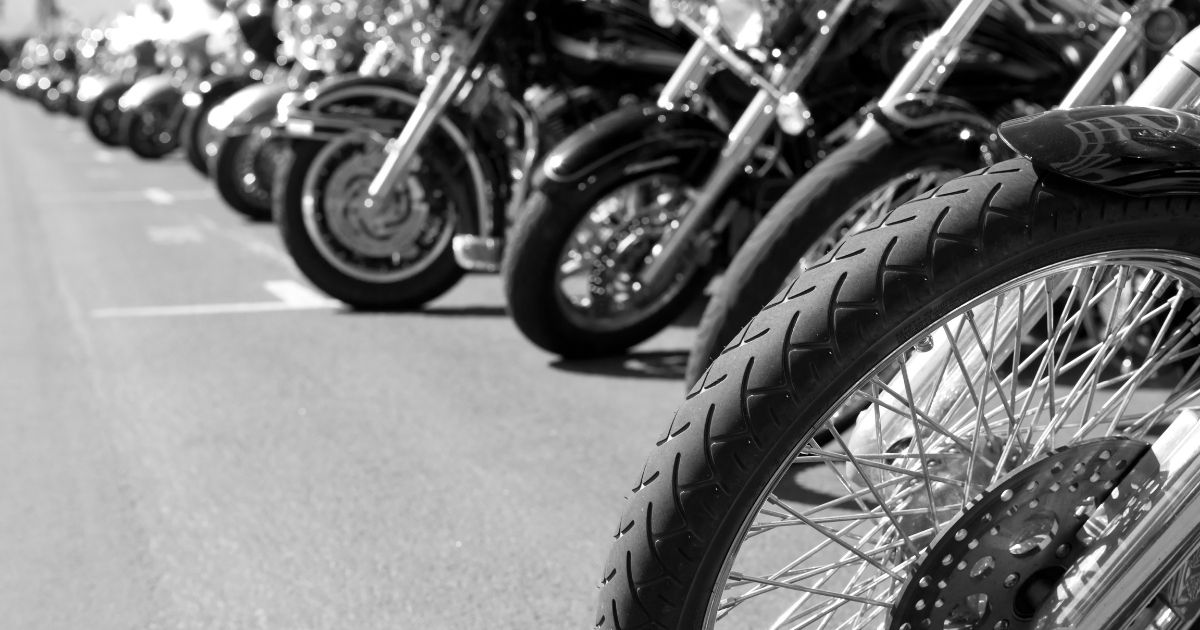While riding a motorcycle can feel freeing, the vehicle itself provides limited protection for riders. There are no air bags, seat belts, or crumple zones to protect bikers from injuries. When an accident happens, the rider and any passengers often suffer at least minor injuries and often more than that. In fact, motorcyclists die in traffic accidents at a rate 28 times greater than the fatality rate of car passengers. On average each year, over 5,000 cyclists are killed on U.S. roads, and over 80,000 are injured.
Abrasions, cuts, and burn injuries are among the more commonly suffered injuries in motorcycle accidents, so are sprains, broken bones, and internal injuries.
Head injuries are dangerous, often life-threatening, and costly, and motorcyclists are especially vulnerable to suffering from one of them in an accident. In Ohio, motorcyclists under the age of 18 years old are required to wear a helmet. Novice motorcyclists who have had their license less than a year are also required to wear a helmet. However, a helmet is the most effective prevention of head injuries and potentially fatal or debilitating traumatic brain injuries, so it recommended that all motorcyclists wear a helmet.
How Can You Avoid a Motorcycle Accident Injury?
Riding safely and wearing protective gear that is appropriate for the weather helps to make your motorcycle riding safer. Your riding gear should include a DOT-approved helmet, a riding jacket, and at least a pair of denim jeans. Leather chaps or padded riding pants or a full riding suit will help to protect against cuts and abrasions.
A good pair of leather riding gloves can help to protect your hands and fingers. Riding boots will help to protect your feet and ankles against serious injuries.
Many bikers often wear a helmet, jacket, and chaps or leather riding pants to protect against injuries. Riding gloves and boots complete the ensemble and increase protection for riders.
Unfortunately, many motorcyclists often go without wearing helmets and other protective gear. The weather might drive the decision to go without a full-face helmet when riding in a state where helmet use is optional. Some might wear novelty helmets to thwart mandatory helmet laws, but novelty helmets will not protect you against a serious injury.
Helmets not only save cyclists’ lives but also prevent injuries that could affect their quality of life if they manage to survive a traumatic accident. According to Advocates for Highway and Auto Safety:
- Motorcycle riders not wearing helmets sustain cervical spine injuries twice as often as riders who do wear helmets.
- Despite representing only about three percent of all registered vehicles on the road, motorcyclists make up 11 percent of annual traffic fatalities.
- Motorcycle helmets reduce the risk of head injury by almost 70 percent.
- On average, there are 8.7 times as many “unhelmeted” motorcycle fatalities in states without universal helmets laws as compared to states with “all-rider” helmet laws.
Motorcycle Maintenance Matters
You also need to maintain your motorcycle to ensure the mechanical systems work properly and your bike is as safe as possible.
The brakes are especially important to ensure safe stopping and better control of your bike. Make sure the brakes have clean fluid for disc brakes and a sturdy connecting rod if your bike has a rear drum brake.
Brake fluid can remove moisture from the air, which will then collect in the brake lines. Bleed the brake lines about every six months will help to ensure that you have full braking power. Good brake pads or shoes also are a must-have.
You need good tires to ensure you can get the best possible traction while riding. Riding on worn-out tires will increase the potential for wiping out on wet or otherwise slippery road surfaces.
Ensure that you have working lights so that drivers can see you clearly. Mirrors also will provide you with the best vision to help identify possible dangers that might be to one side or the other or behind your motorcycle.
A properly maintained motorcycle is as safe as the rider and other drivers allow. You also get better performance and longer life from your bike.
Good Insurance Protection Is Important
In many ways, the best protection that you can take with you while riding a motorcycle is good motorcycle insurance. You need more than simple liability insurance to protect against the costs of treating potential injuries and damage to your motorcycle.
Ohio is not a no-fault state. In the Buckeye State, drivers are required to carry minimum liability insurance of:
- 25,000 bodily injury coverage per person, per accident.
- 50,000 bodily injury coverage total per accident.
- And 25,000 property damage coverage.
You also should consider uninsured/underinsured motorist coverage and medical insurance to help pay for your medical costs and property damage. If someone hits you while you are riding and flees, that motorist qualifies as an uninsured hit-and-run driver.
An at-fault motorist also might be identified but lacks the insurance coverage to pay all your costs. The uninsured/underinsured motorist coverage should pay your additional costs up to policy limits.
Medical insurance also will pay up to a relatively small amount, such as $5,000, to help cover the costs of an ambulance, emergency room treatment, and other medical costs up to the policy limits. Health insurance can cushion emergency costs as well.
What Can You Do to Ride Safely?
Many states have helmet laws that require you to wear a DOT-approved helmet while riding. A DOT-approved helmet is one that the respective state departments of transportation have identified as providing an acceptable level of protection for the heads of motorcyclists and their passengers.
Unfortunately, many riders choose to forego helmet protection, especially in states where there are no mandatory helmet laws. Riding without a helmet greatly increases the potential for suffering a head injury that requires significant medical care and might make radically change your lifestyle and quality of living.
In addition to wearing a helmet and other safety gear, completing a motorcycle safety course will help you to learn how to handle your bike better. You will learn how to ride more safely while identifying traffic dangers that might cause an accident. Most insurers also discount premiums after you successfully complete a motorcycle safety course.
What Should You Do After a Motorcycle Accident?
After a motorcycle accident, receiving medical care is the primary concern. Even a low-speed accident could cause serious or fatal injuries.
If another vehicle struck you, you will likely need immediate medical care. While you are in the emergency room, the offending driver might try to blame you. You need to ensure any police report includes your side of the story so that you can challenge any false information.
You should try to obtain contact information from any witnesses or other evidence that might confirm the accident’s cause and support your claim. You also should retain a lawyer who will protect your rights and help you with your personal injury claim.
Dayton Personal Injury Lawyers at Wright & Schulte LLC Can Help You While You Recover from a Motorcycle Accident
An experienced Dayton personal injury lawyer at Wright & Schulte LLC can help accident survivors like you to file strong claims and uphold your rights. You can call 937-222-7477 or contact us online to schedule a free consultation. From our office in Dayton, Ohio, we serve clients in Cincinnati, Columbus, Cleveland, Centerville, Toledo, Youngstown, and Miamisburg.



